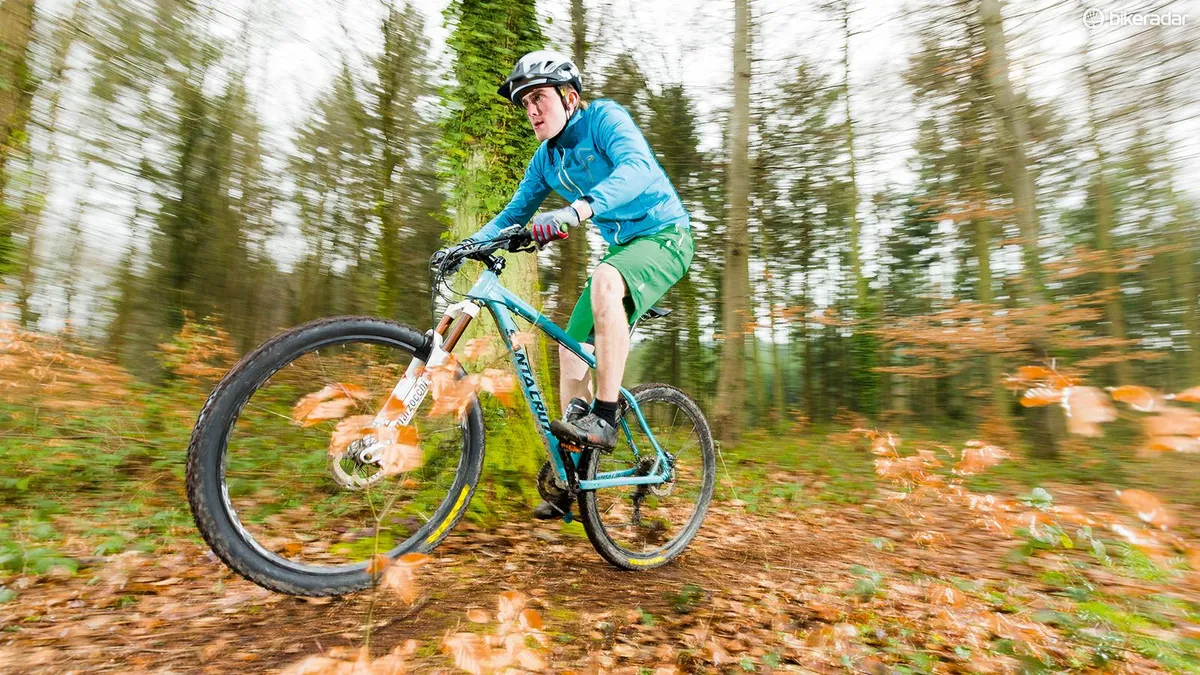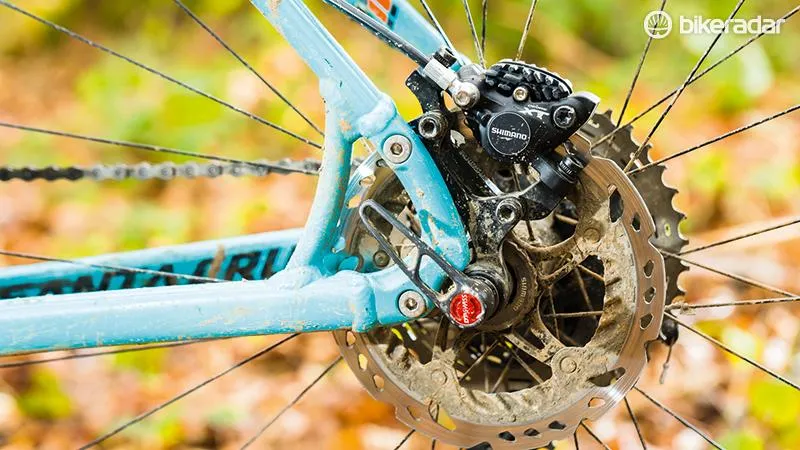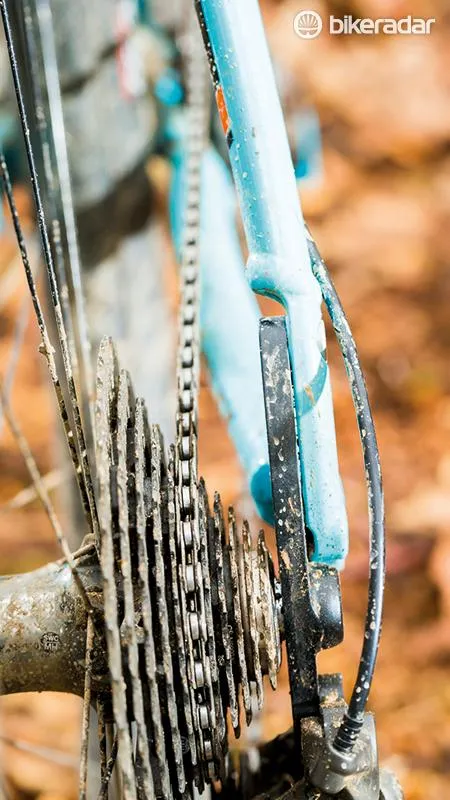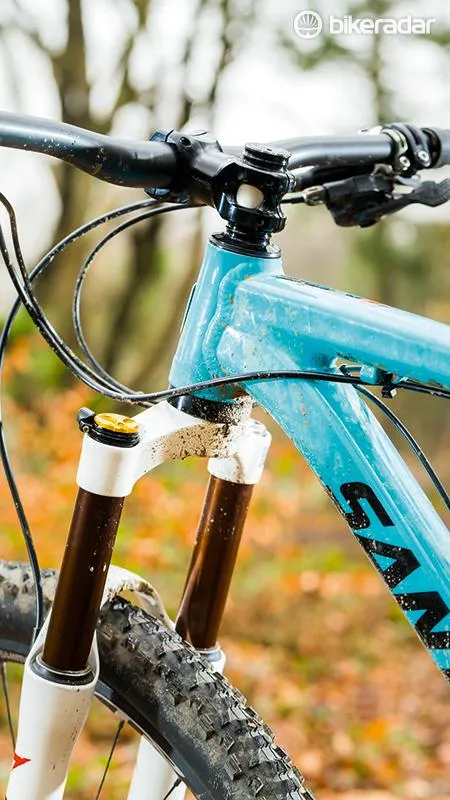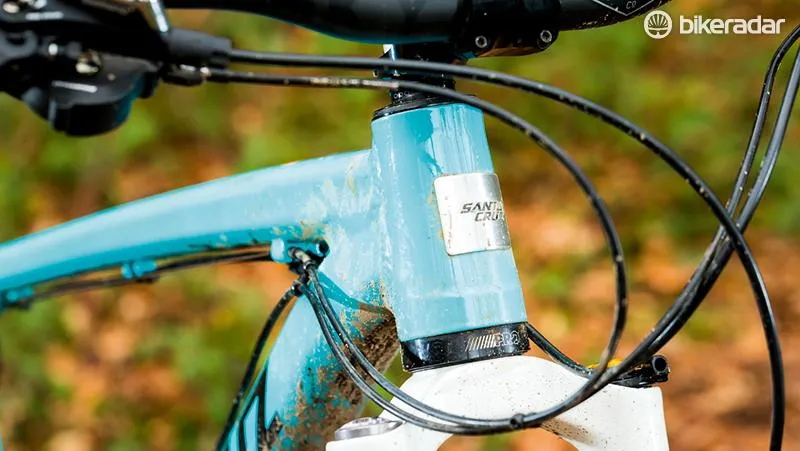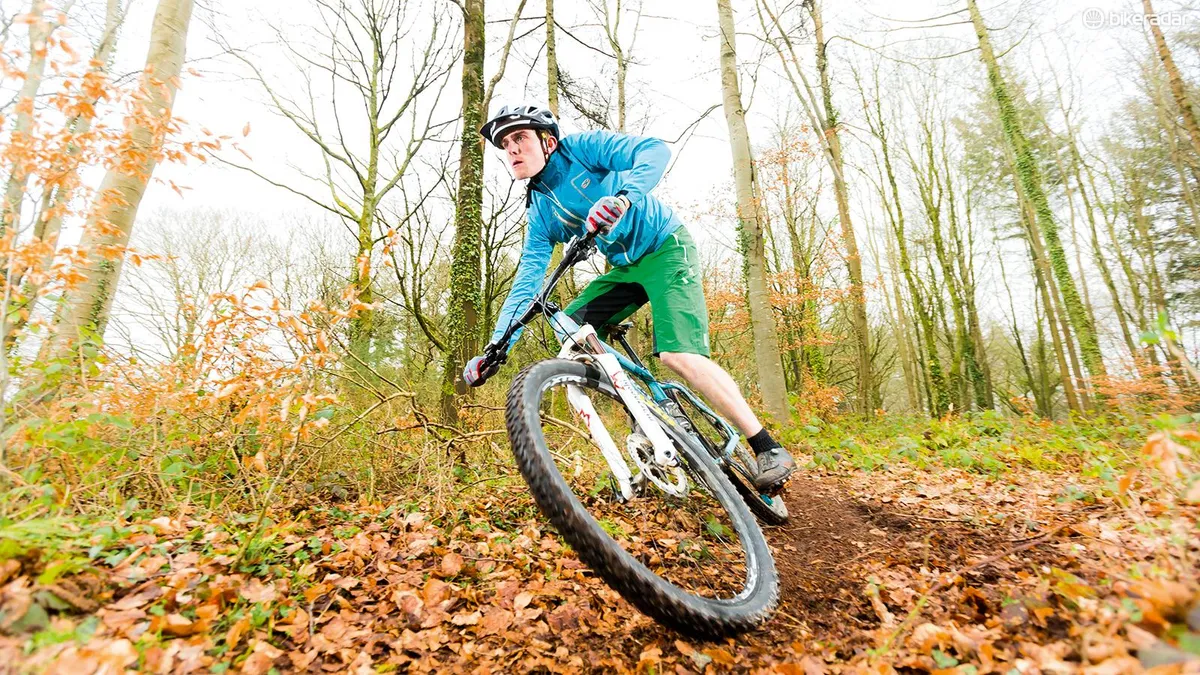Santa Cruz’s Highball has always been at the more cross-country end of things, with its brother, the Chameleon tackling the slightly more ‘gnar’ aspects in hardtail form. Despite that, the Highball of old was capable on interesting trails, as we found out last year running one as a long term bike. It wasn’t just fast, but also a lot of fun, and with a longer fork and a dropped saddle it was far more at home on steeper terrain than it might have looked.
Frame and equipment: XC-oriented styles for 2015
For 2015 Santa Cruz is offering three Highballs – the alloy 29er tested here, and two carbon models – a 29in and a 650b version.
With the 2015 Highball, Santa Cruz has taken the model's heritage and shifted the bike to a more cross-country bias. The biggest change from the previous model is the longer top tube (from 609mm to 625mm in size L) and the addition of a bolt-thru rear end. The head tube has also got half a degree slacker to 70 degrees (with 505mm axle to crown fork).
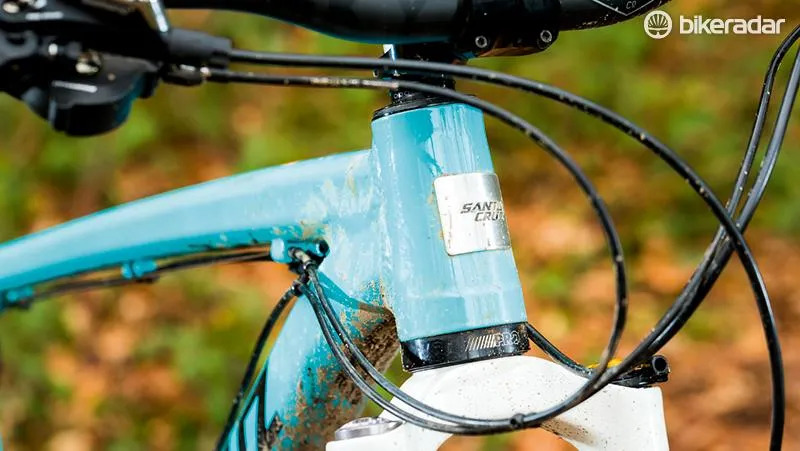
Angles are still pretty tight, but extra length means more fun
While many cross-country orientated bikes, and mountain bikes in general, have moved towards press-fit bottom brackets, Santa Cruz has stuck with the traditional threaded setup. This, in our eyes is a welcome feature – they’re easy to service and replace and tend to creak less in our experience. This does mean that there’s less material in the bottom bracket area, which has a slight impact on stiffness in that area despite the wide-diameter down tube. The rear triangle benefits from a slight touch of softness though, as, without sounding like a cliché, there’s a welcome element of vertical give that keeps the Highball comfier than some of its more race-bred stablemates.
With that in mind, biggest question over the Highball comes from its seat tube. With XC courses becoming more technical, and the Highball encouraging you to enjoy the descents, rather than teeter down them, it’s a shame to see a 27.2mm seat tube there. Whether or not pro racers use them, with more and more lightweight dropper posts, such as the KS Lev Ci, a 27.2mm seat tube limits dropper compatibility, which begins to limit its viability as an all-round trail bike. Santa Cruz has done this so racers can fit a more comfortable narrow-diameter carbon post, but we feel it’s a compromise that didn’t need to be made.
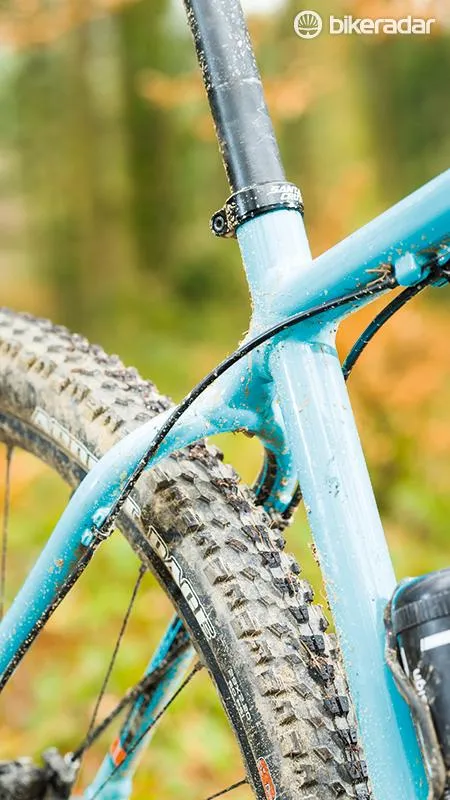
The skinny 27.2mm seatpost means plenty of give, but it will be hard to fit a dropper post
Given that the SC website states that the Highball has been ‘designed to do two things: 1. Race. 2. Win’, we built ours up with a race-focused build – forward motion controlled largely by the new mechanical XTR and stopping via XT brakes. Marzocchi’s 120mm 320 LCR fork was plugged in to take the sting from the trail and the rest of the parts from whatever lightweight kit we had lying around the office.
Ride and handling: racy by nature, but no slouch on the descents
Jumping on the Highball, its racy character becomes apparent. The elongated top tube, when paired with a suitably cross-country-orientated 70mm stem stretches your torso out, opening the chest for maximum oxygen intake. On the flat and on long drags uphill the longer position means you can get lower, or shift your hips a touch further forward on the saddle to get a more powerful stance over the pedals. If you need to really put the power down there’s plenty of space to move your body about while standing on the pedals too.
While last year’s QR back end was comfy if a little soft, the addition of the DT Swiss RWS bolt-thru axle has sharpened its response under power compared with last year's Highball. DT Swiss’ RWS axle is quick and easy to use, while remaining nice and secure. The dropouts guide the wheel into the frame more easily too. Should you wish to run the Highball singlespeed, the dropouts can be swapped for swinging singlespeed specific ones, which take a QR wheel.
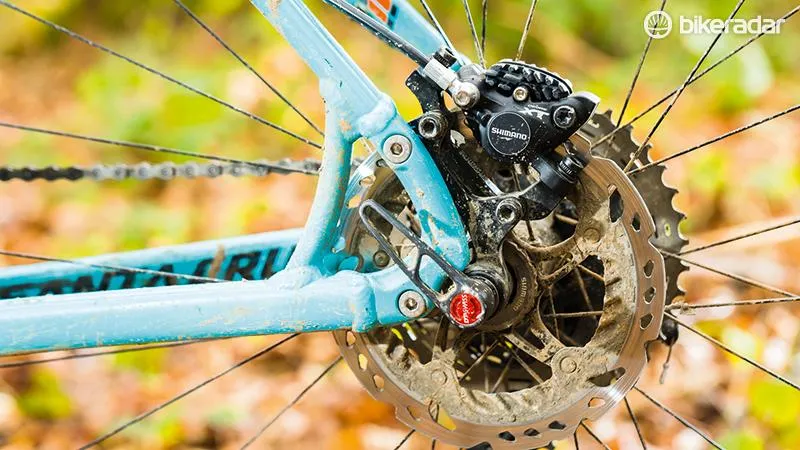
Replaceable dropouts mean you can go singlespeed. If you’re weird
If the old adage of ‘races are won on the climbs but lost on the descents’ is true, then the Highball should significantly reduce any post-race excuses. If the course is hardtail friendly, the Highball’s descending capabilities aren’t going to let you down.
We ran a slightly longer fork than recommended. The Marzocchi fork is 120mm travel, but its axle to crown length is relatively long at 530mm, tipping the head angle back a bit below 70 degrees. As such, ours felt a little more trail bike-like, with confident handling on steeper, more technical terrain. With a shorter fork, the Highball is still great fun. The 625mm top tube gives stability and the 430mm chainstays, down from 439mm on the previous model, allow for snappy cornering. In tight tree-lined runs the ability to change direction quickly, dispelling lazy-steering myths of 29ers, makes for an exhilarating ride, heightened by the quick bursts of acceleration made possible by a light build. While the head angle might be slacker than before, it’s still a straight up 70 degrees, so the addition of 16mm in the top tube is a welcome addition when it comes to flat-out stability, both on the flat in loose terrain and when its nose is pointed down a hill.

It’s fast, fun and versatile, whether you race or ride long
We’re fans of the 29in wheels’ ability to carve through long corners too. The Highball lets you drop a shoulder and ride on the edges of the tyres seemingly endlessly. Those big wheels carry the bike nicely over loose and rough terrain too, so the Highball rarely left us feeling too battered. Despite quite a stumpy head tube, the larger wheels do mean that the bike is reasonably tall, and despite its agility we sometimes felt perched on top.
Specs as tested:
- Sizes: S, M, L (tested), XL
- Frame: Highball aluminium
- Fork: Marzocchi 320 LCR, 120mm
- Wheels: Shimano XTR)
- Tyres: Specialized Butcher(f), Specialized Ground Control (r)
- Cranks: Shimano XT, 38/24
- Gears: Shimano XTR
- Brakes: Shimano XTR
- Stem: Thomson
- Bar: Whisky Parts Co Carbon
- Saddle: Syncros XR1.5

